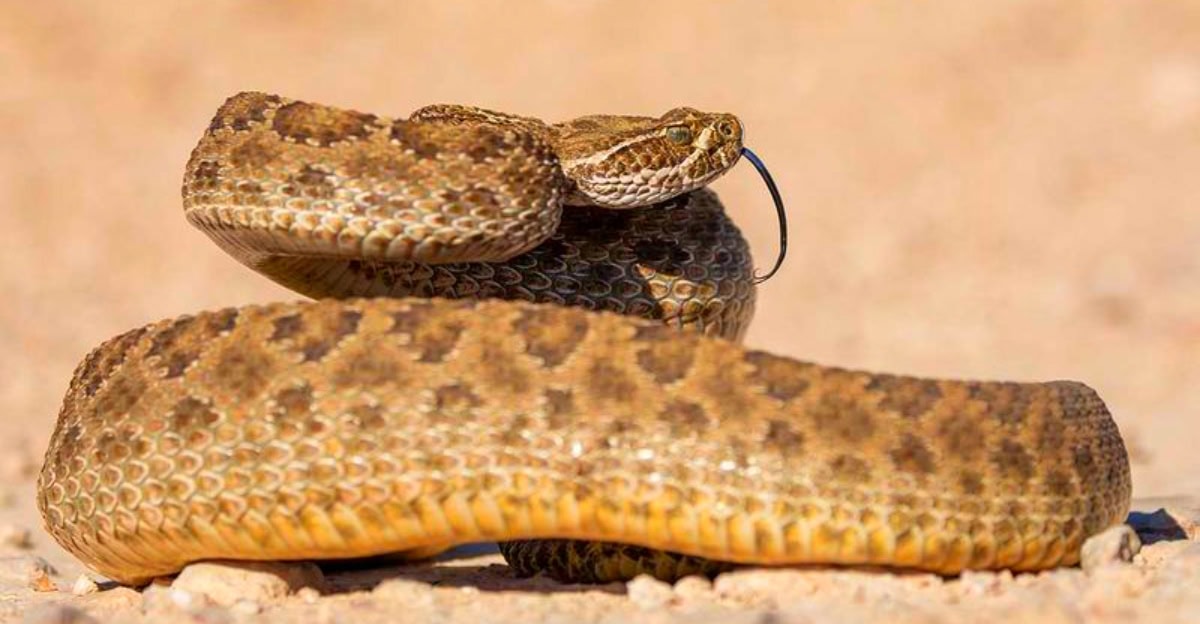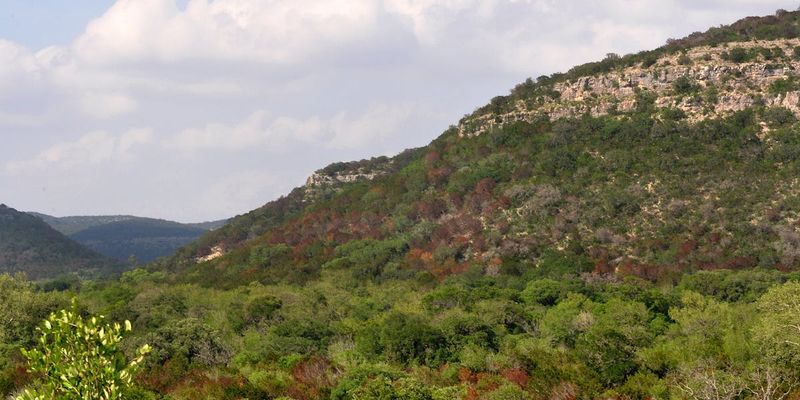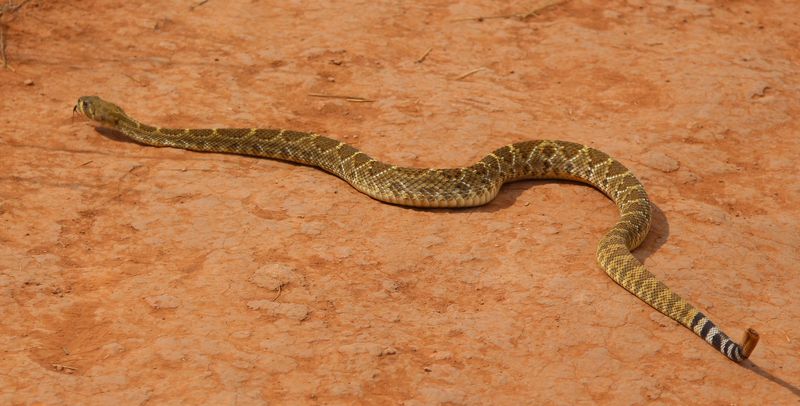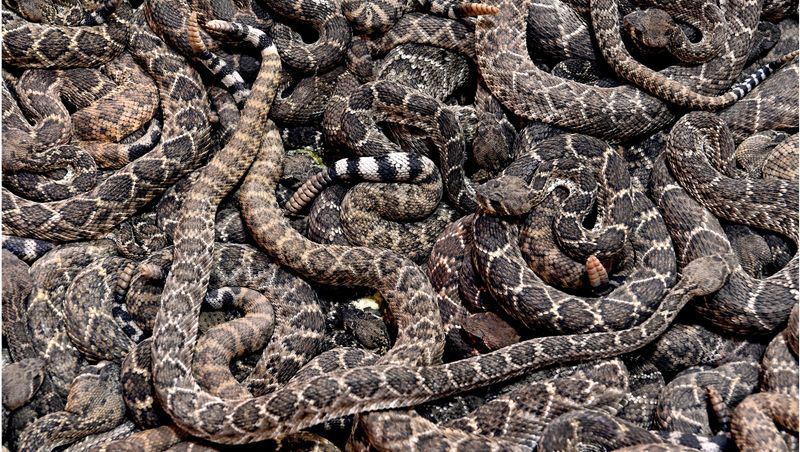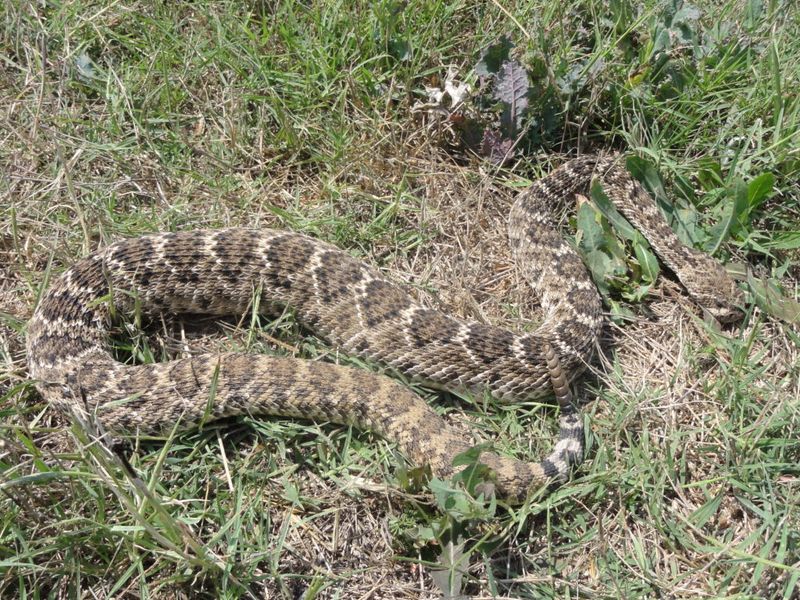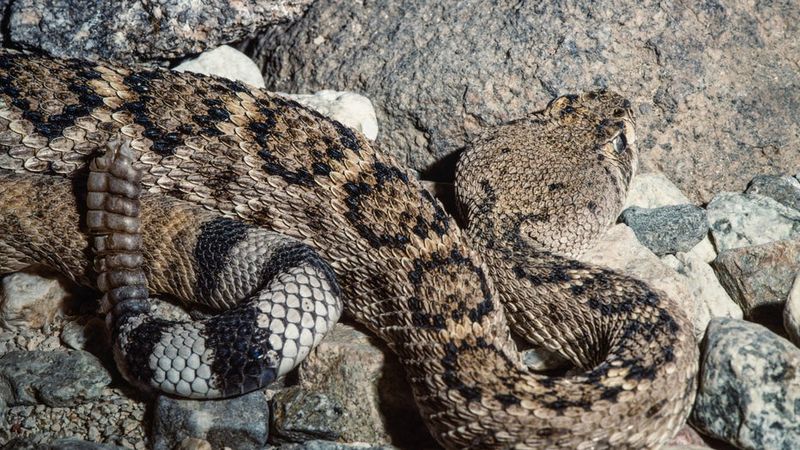The diverse landscapes of Texas serve as home to a variety of rattlesnake species, making certain areas more prone to encounters. Whether you’re exploring canyons, deserts, or woodlands, knowing where these slithering reptiles are most active can help you plan safer adventures. Here are seven places in Texas where rattlesnakes are particularly abundant.
1. Trans-Pecos & West Texas Deserts
In the arid expanses of West Texas, the Trans-Pecos region is a riddle of rocky terrain and scattered scrub. This area, which includes the famous Big Bend National Park and the Davis Mountains, serves as the abode for various rattlesnake species. These creatures find the rocky slopes and canyon edges ideal for denning, especially during the peak activity seasons of spring and early summer.
Encounters are common on desert trails as snakes emerge to hunt, their presence more noticeable near rocks and bushes. Hikers and campers are advised to stick to trails, don sturdy boots, and exercise caution while navigating this rugged landscape.
2. Edwards Plateau & Hill Country
Central Texas’s Edwards Plateau and Hill Country are more than just scenic vistas; they are hotspots for rattlesnake activity. The Western Diamondback thrives here, camouflaged among limestone outcrops and rugged trails. As you wander through this region’s popular state parks and nature reserves, be mindful of the crevices and rocky ledges.
Spring and fall witness a spike in snake activity, especially around dawn or dusk when the temperatures are just right. The blend of overgrown brush and rugged terrain offers perfect cover for these reptiles, making vigilance and proper footwear essential for any visitor.
3. Panhandle Plains & Palo Duro Canyon
Palo Duro Canyon, often dubbed the “Grand Canyon of Texas,” is a playground for rattlesnakes amidst its dramatic red rock cliffs. The Western Diamondback prefers the rocky ledges, while Prairie Rattlesnakes claim the grasslands. These areas, rich with prey like rodents, create a paradise for these reptiles.
Warm months see an uptick in snake activity, making it crucial for hikers to tread cautiously. Sticking to paths, wearing tall boots, and checking crevices before use are wise precautions. The enchanting views come with the thrill of knowing that every step might bring you face-to-face with one of these elusive creatures.
4. Sweetwater & West-Central Texas
Sweetwater, known for hosting one of the largest rattlesnake roundups, is a testament to its dense Western Diamondback populations. The flat plains, mesquite brush, and rocky soils of West-Central Texas provide a thriving habitat for these snakes.
Local lore suggests that encounters are prevalent around outbuildings and woodpiles, where snakes seek refuge and hunt. Spring brings heightened activity due to mating and emergence seasons, suggesting caution for both residents and travelers. By clearing debris and reinforcing buildings, you can minimize the chance of an unexpected guest slithering by.
5. Lower Rio Grande Valley & South Texas Brushlands
In the semi-arid expanse of South Texas, the Lower Rio Grande Valley is a tangled web of brush and bottomlands. Western Diamondback and Desert Massasauga rattlesnakes make this area their home, finding ample cover among the agricultural edges and thornbrush.
Encounters often occur when people stray into tall grasses or near irrigation ditches at dawn or dusk. With their activity peaking during these cooler periods, both humans and pets must remain vigilant. In this vibrant ecosystem, the rustle of leaves may just reveal the presence of a stealthy predator.
6. East Texas Piney Woods & Forested Areas
East Texas, with its Piney Woods and swampy expanses, is an unexpected yet suitable home for rattlesnakes. The timber rattlesnake and western pygmy find sanctuary among the dense undergrowth and fallen logs of the Big Thicket and Davy Crockett National Forest.
While snake encounters here are less frequent than in arid zones, they are no less possible. Hikers are advised to wear long pants and boots, keeping to cleared paths and steering clear of leaf litter. This lush environment, rich with wildlife, holds the allure of discovery and the subtle danger of these cryptic serpents.
7. Central Texas Woodlands & Suburban Fringe
Rattlesnakes are not just a rural concern; Central Texas’s suburban fringe sees its fair share too. Around cities like Austin and San Antonio, Western Diamondback and Black-tailed rattlesnakes find a niche amid semi-wooded areas and rocky zones.
As spring arrives, so does a surge in snake activity, often leading to unexpected yard encounters. Residents are encouraged to maintain tidy gardens and clear potential snake shelters like brush piles. As the sun sets, these reptiles become active, making vigilance key to coexisting safely with these backyard visitors.
